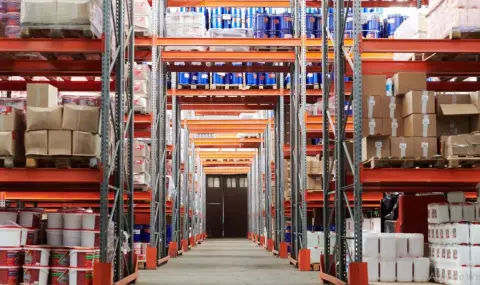The existing modern logistics and industrial areas for speculative leasing in Sofia class A and B are about 1,368,500 sq. m. by mid-2024, a Colliers report shows. This represents a decrease of 7,500 square meters compared to the end of the previous year, which is the result of several factors - the preference of local companies to build their own building stock, the lack of new projects under active construction due to the high cost of construction, as well as and reclassification of Class B to Class C buildings that fall outside the scope of Colliers' statistics. The modern areas under active construction in Sofia are almost 132,000 square meters, with more than half of them concentrated in several buildings from one project.
The level of demand remained stable in the first half of the year. The distribution by sector is - 38% of the volume is due to companies in the field of logistics and 3PL, followed by the manufacturing sector (14%) and trade and construction (with 12% each). The remaining 24% is distributed mainly in distribution and pharmacy.
In the first half of 2024, the share of unoccupied areas in Sofia reached a record low level of about 3.5%, and the occupied areas are over 44,200 sq.m. The majority of this volume (74%) represents new demand or expansion, while renegotiations or extensions of already existing contracts are 14%, and the remaining 12% are buildings that are built specifically for a specific tenant (built-to-suit). .
Rental levels remain unchanged at an average of EUR 5.50 per sq.m. per month for class A warehouses and around EUR 4.0 for class B. They remain under pressure due to stable demand and lack of quality space on the market. Maintenance fee is in the range between EUR 0.8 – EUR 1.5 per sq.m. per month.
The normalization of construction prices has thawed the construction intentions of investors and as a result there are currently more areas under active construction. Colliers predicts this trend to continue at a normal pace, with more and more new projects (or subsequent phases of existing ones) moving from planning to construction.
Reflections of the ESG wave are also noticeable in the industrial sector. Investors are increasing their spending on green solutions to support the sustainability of their projects. Photovoltaic installations are one of the main requirements of tenants. The EU's decarbonisation policy should stimulate even more building owners to invest in modernisation.
Serving local traders from Romania is becoming a market practice from a trend. The availability of much more quality areas, much lower prices and relative proximity to the market are the main factors for this. This situation will persist in the medium term, until the Bulgarian market develops to the point where it can be competitive. It is expected that the acceptance of the country into the Schengen area will put Bulgaria in a better position.
You can see detailed statistics on average property prices in Bulgaria by cities and neighborhoods HERE
